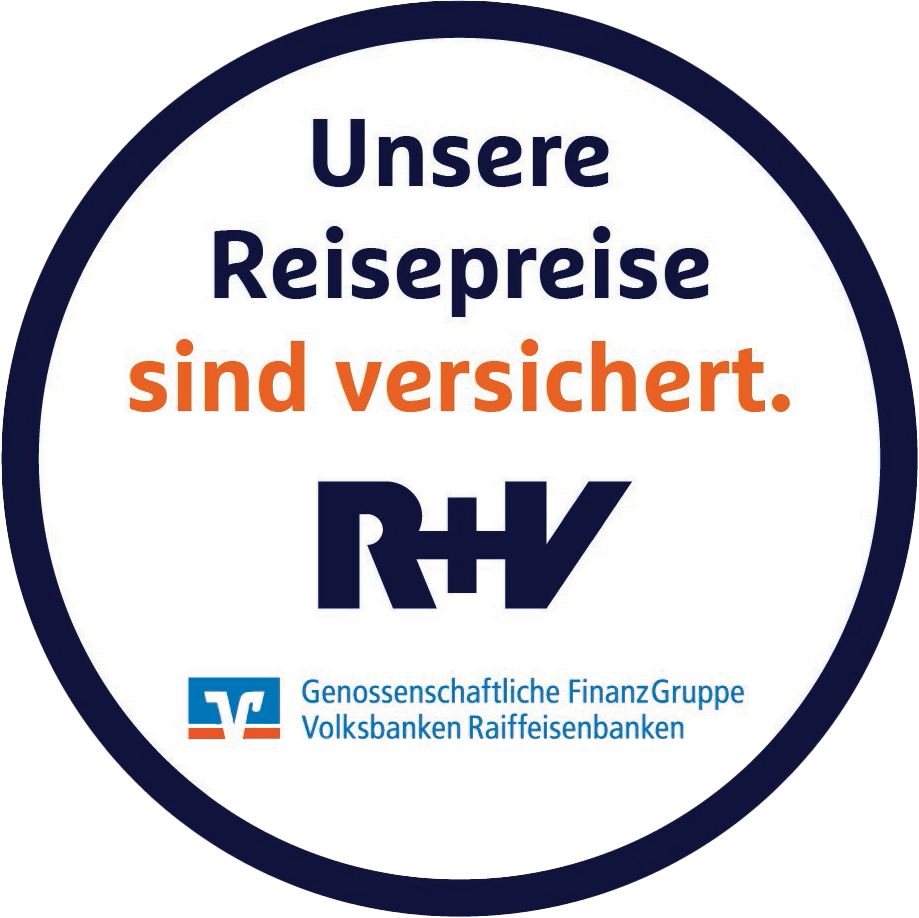Erlebe mit Deinem eigenen Geländewagen oder einem unserer Land Rover Defender das ultimative Offroad-Abenteuer in Marokko! Diese 4x4 Tour führt dich durch abwechslungsreiche Landschaften, von den imposanten Bergen des Atlas bis an den Rand der Sahara. Entdecke abseits der üblichen Touristenpfade einsame Pisten, Sanddünen und malerische Oasenstädte! Tauche ein in die unberührte Natur Marokkos und übernachte unter dem klaren Sternenhimmel. Gemeinsam kochen wir abends in der Wildnis und genießen Abenteuerurlaub vom Feinsten!
Offroad Geländewagenreise durch Marokko
Impressionen vergangener Geländewagenreisen
Ab in die Wüste!
Eine Offroadtour durch Marokko, die entspannt, anstrengend, abenteuerlich, romantisch sowie kalt und heiß in einem ist. Start und Ende dieser Geländewagenreise ist der Fährhafen Tanger Med nordöstlich von Tanger. Grundsätzlich ist es euch selbst überlassen von welchem europäischen Hafen ihr anreisen möchtet. Hauptsache ist, ihr schafft es nach Tanger um mit uns in eurem 4x4 in die Wüste zu fahren. Von Tanger aus geht es dann 14 Tage in die abwechslungsreichen Landschaften Marokkos. Diese Offroadreise führt uns über landschaftlich äußert reizvolle Pisten, über den mittleren und hohen Atlas, bis an den Rand der weiten Sahara. Je nach Wunsch können wir diese einsame Gegend zwei oder mehrere Tage auskosten, bevor wir wieder touristisch ausgetretenere Pfade erreichen, denn die großen Dünen des Erg Chebbi ganz im Osten und des Erg Chegaga an der Grenze zu Algerien sind Pflicht und Bilderbuchziel für jeden Marokko Reisenden. Der Vorteil unserer voll ausgerüsteten Offroad Geländefahrzeuge ist die Flexibilität. Wenn möglich gönnen wir uns ein ausgiebiges marokkanisches Mittagessen, aber auch das gemeinsame Kochen mit unseren eigenen Vorräten macht Spaß. Bis auf die erste Nacht sind keine festen Hotelübernachtungen auf der Tour vorgesehen, wir werden daher meistens Outdoor übernachten. Aufgrund der sich rasch entwickelnden Infrastruktur wird es immer Streckenabschnitte auf dieser Offroadtour geben, welche wir neu befahren. Für uns ist es wichtig, dass diese Tour das Abenteuer und nicht das planbare pauschale Urlaubserlebnis beinhaltet.
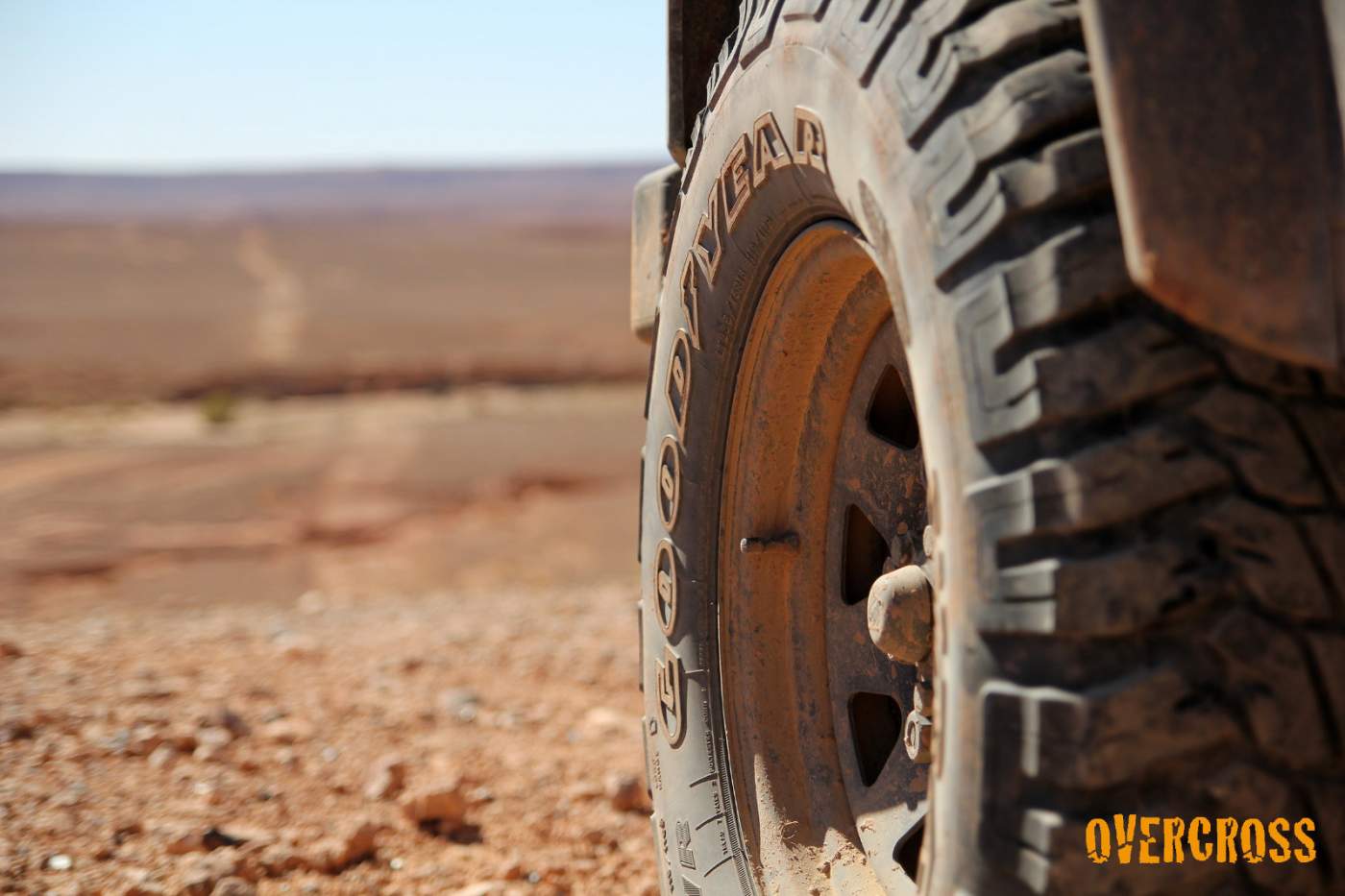
Ob AT oder MT - Unser Geländewagen fühlen sich auf den Pisten Marokkos zu Hause.
Anreisetag 1 & 2: Tübingen - Algeciras - Fähre
Die Anreise kann jeder Teilnehmer individuell planen, wir erledigen aber sehr gerne die Fährbuchung ab Algeciras für euch. Mögliche Treffpunkte entlang der Strecke sind bei OVERCROSS in Tübingen, im Fährhafen von Algeciras oder in unserer ersten Unterkunft in Marokko. Wer möchte, kann sich uns direkt ab Tübingen anschließen und gemeinsam mit uns anreisen. Wir fahren an den ersten beiden Tagen vor dem offiziellen Tourstart bis nach Algeciras im Süden Spaniens. Der erste Tourtag beginnt dann mit der ca. eineinhalbstündigen Überfahrt von Algeciras nach Marokko.
Geländewagenreise Tag 1: Ankunft in Marokko und offizieller Tourstart
Angekommen in Marokko, fahren wir in unsere Unterkunft und treffen alle die Teilnehmer, die eine andere Anreiseroute gewählt haben. Bei einem ersten Abendessen lernen wir uns alle kennen und besprechen die vor uns liegende Tour, bevor wir am nächsten Tag unsere Geländewägen in Richtung Süden steuern.
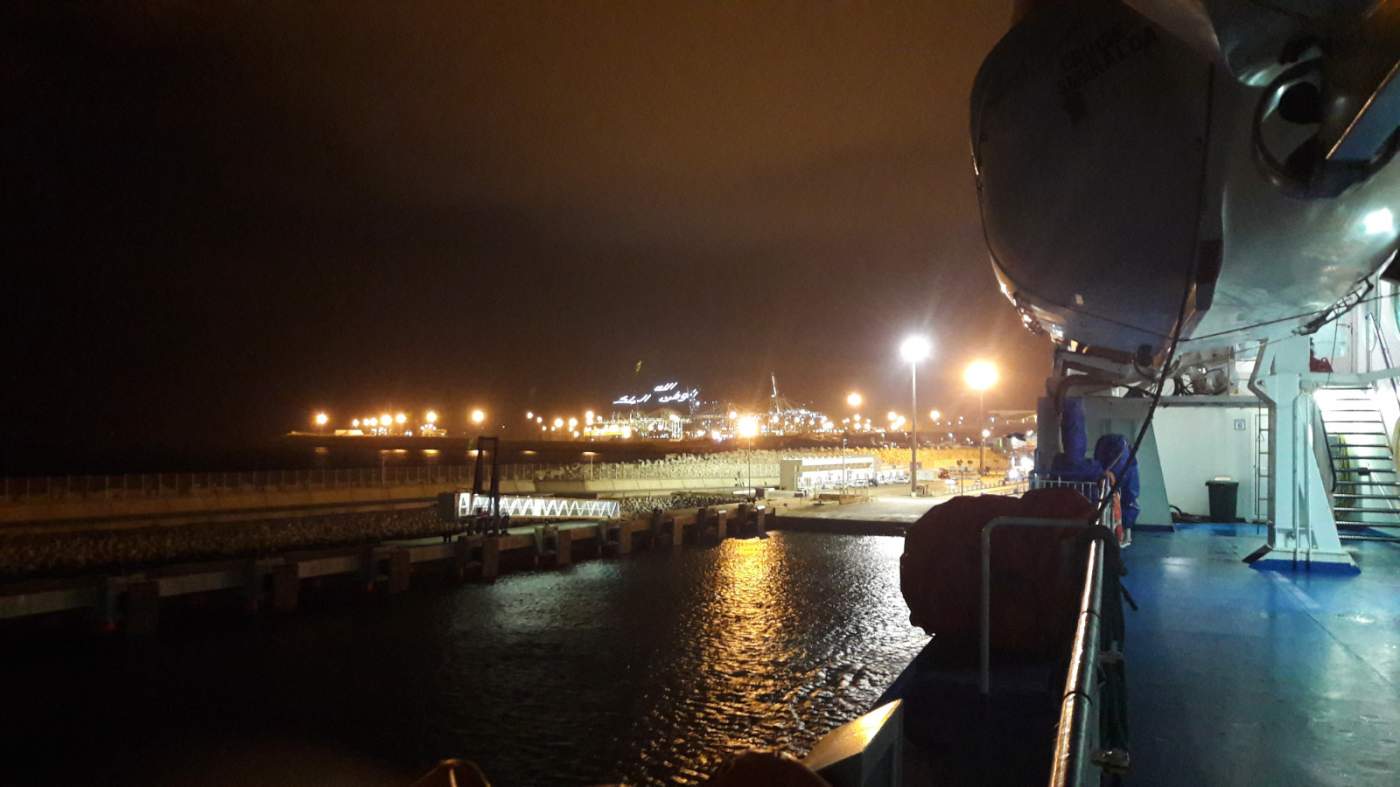
Anlegen der Fähre im Fährhafen von Tanger Med in Marokko
Geländewagenreise Tag 2: Tanger Med – Chefchaouen
Von unserer Unterkunft in Tanger aus fahren wir heute über die ersten Offroad Kilometer in die blaue Stadt nach Chefchaouen wo wir unser erstes Camp aufschlagen.
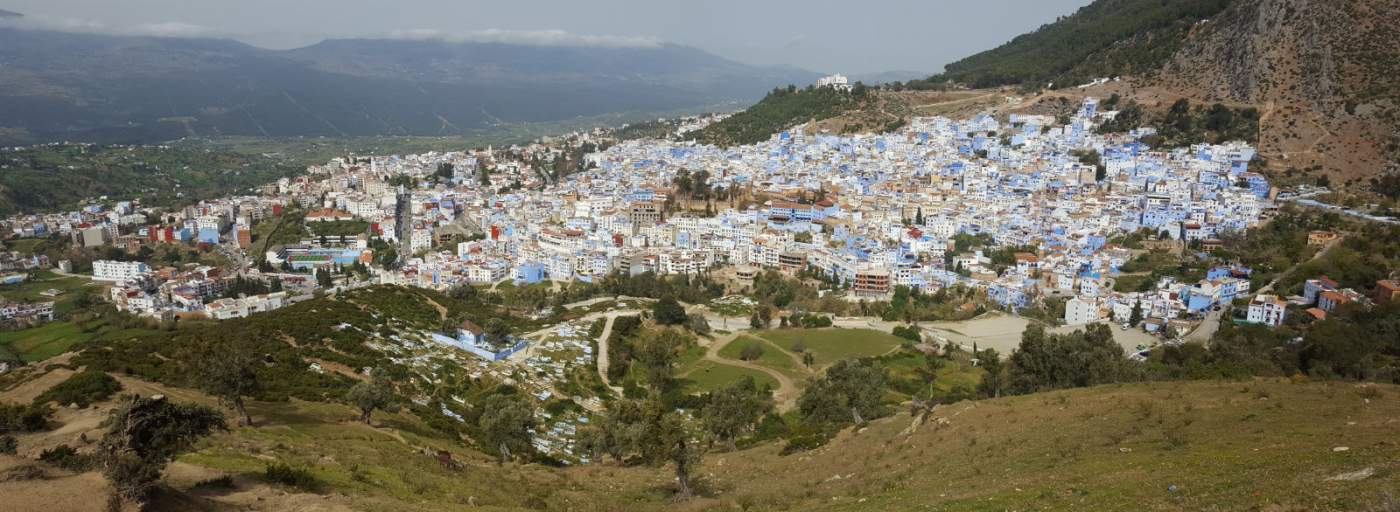
Chefchaouen die blaue Stadt im Rif Gebirge ist unser erster Stop auf unserer Geländewagenreise durch Marokko
Geländewagenreise Tag 3: Chefchaouen – Fes
Heute geht es durch das Rif Gebirge im Norden Marokkos in die ca. 200 Km entfernte Königsstadt Fes. Es bleibt genügend Zeit um Fes anzuschauen und in der riesigen Medina das ein oder andere Souvenier einzukaufen. Den Großteil der Strecke werden wir über Schotterpisten zurücklegen welche sich mit gröberem steinigen Untergrund abwechseln werden.
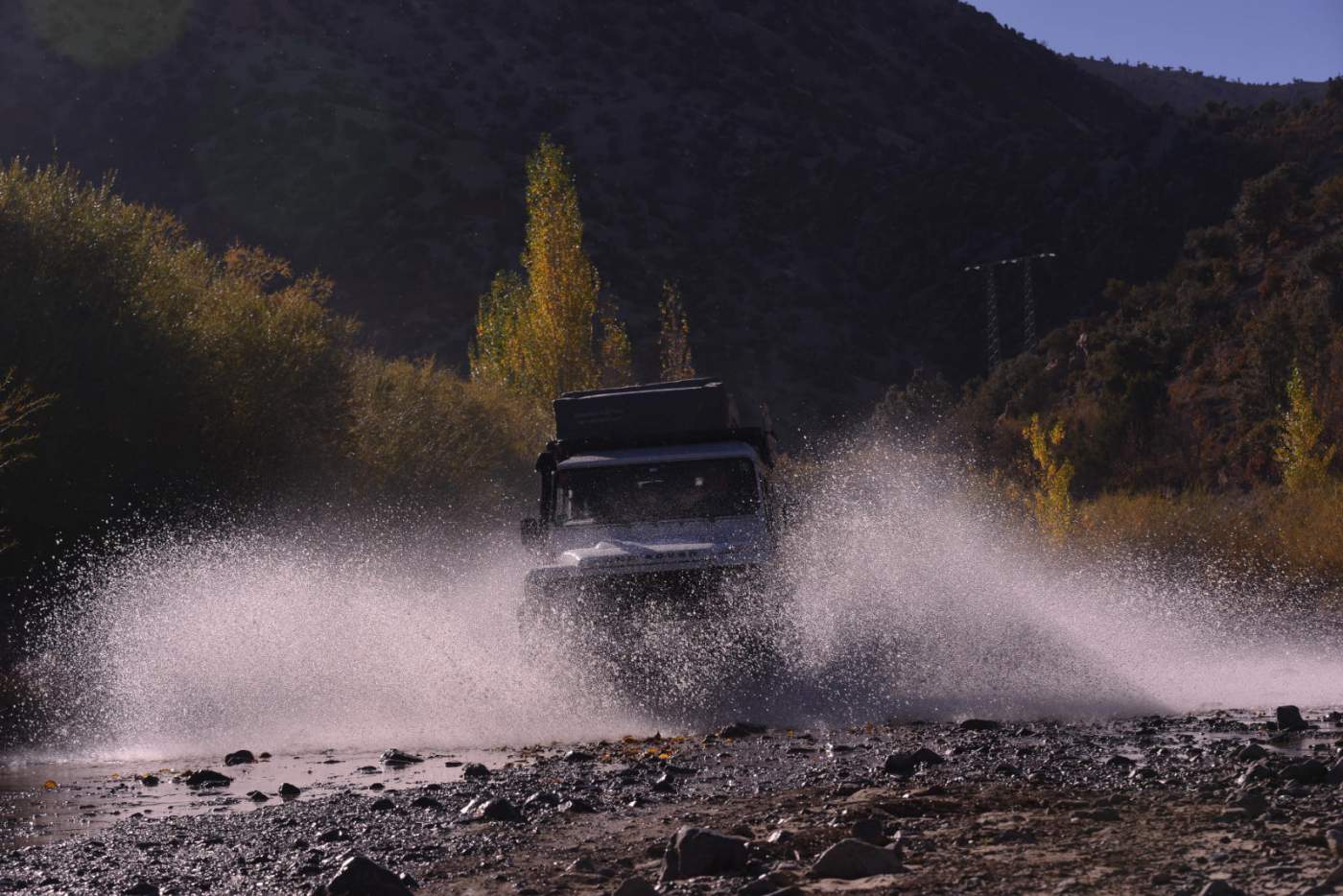
Durch teilweise grobe Flussbete mit und ohne Wasser führt unsere Geländewagenreise durch das Rif Gebirge
Geländewagenreise Tag 4: Fes – Erg Chebbi
Auf dieser langen Etappe fahren wir über den mittleren und den hohen Atlas und erreichen am späten Nachmittag das Dünenmeer Erg Chebbi nahe der Oasenstadt Merzouga. Das Dünenfeld ist ein echtes Highlight und wer will, kann ein erfrischendes Bad im Pool vor dieser atemberaubenden Kulisse nehmen, um nach dem anstrengenden Fahrtag etwas Erholung zu bekommen.
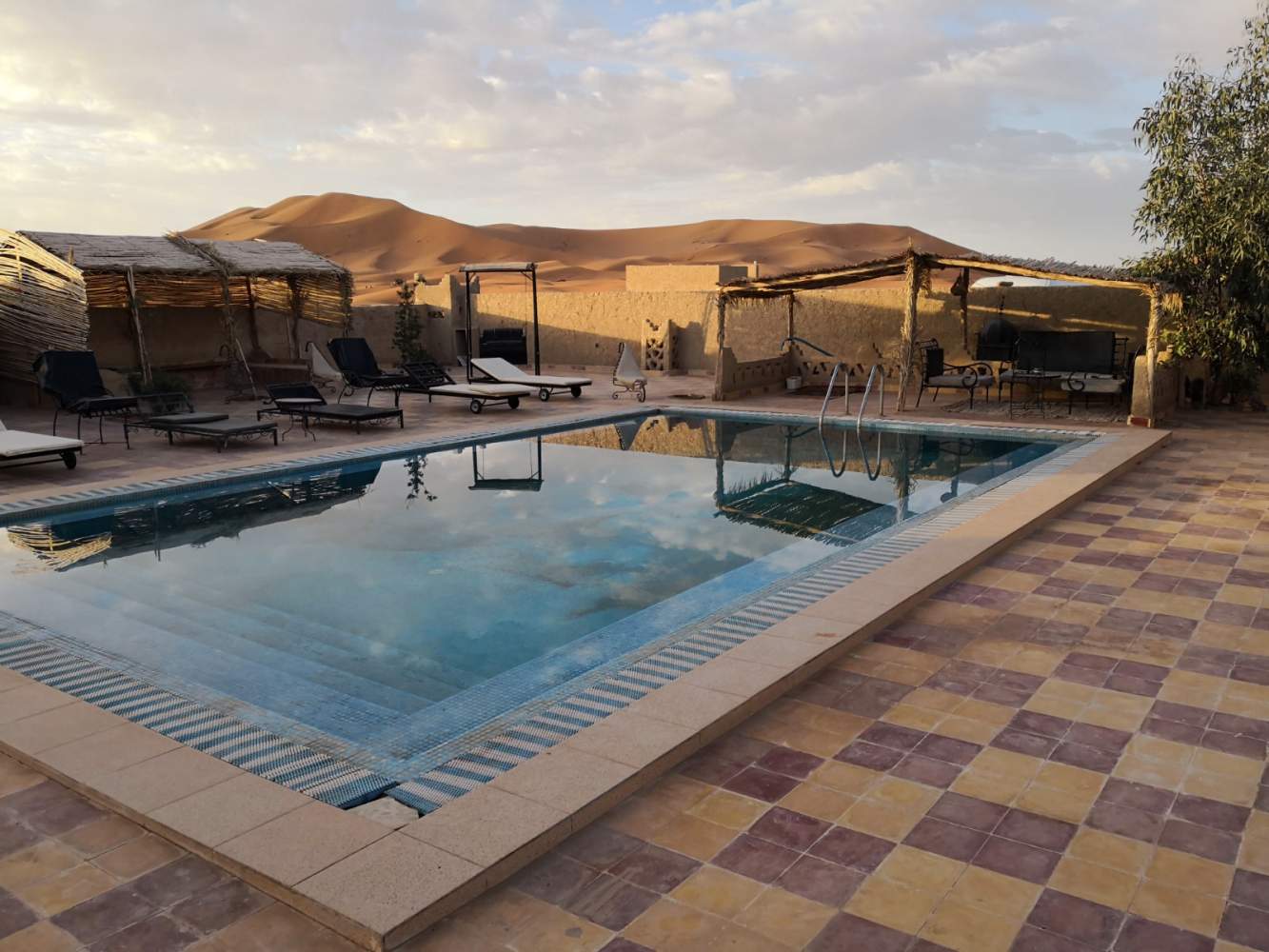
Unsere Unterkunft hat neben Sand auch einen Pool mit Blick auf die Dünen des Erg Chebbi
Geländewagenreise Tag 5: Erg Chebbi - Erg Chebbi
Der heutige Tag steht zur freien Verfügung. Wer möchte, kann mit dem Geländewagen eine Runde im Sand fahren bzw. einmal das Dünenmeer umrunden oder auch einfach ganz faul am Pool liegen oder eine Dünenwanderung machen. In diesem Sandkasten nahe der algerischen Grenze kommt sicherlich keine Langeweile auf.
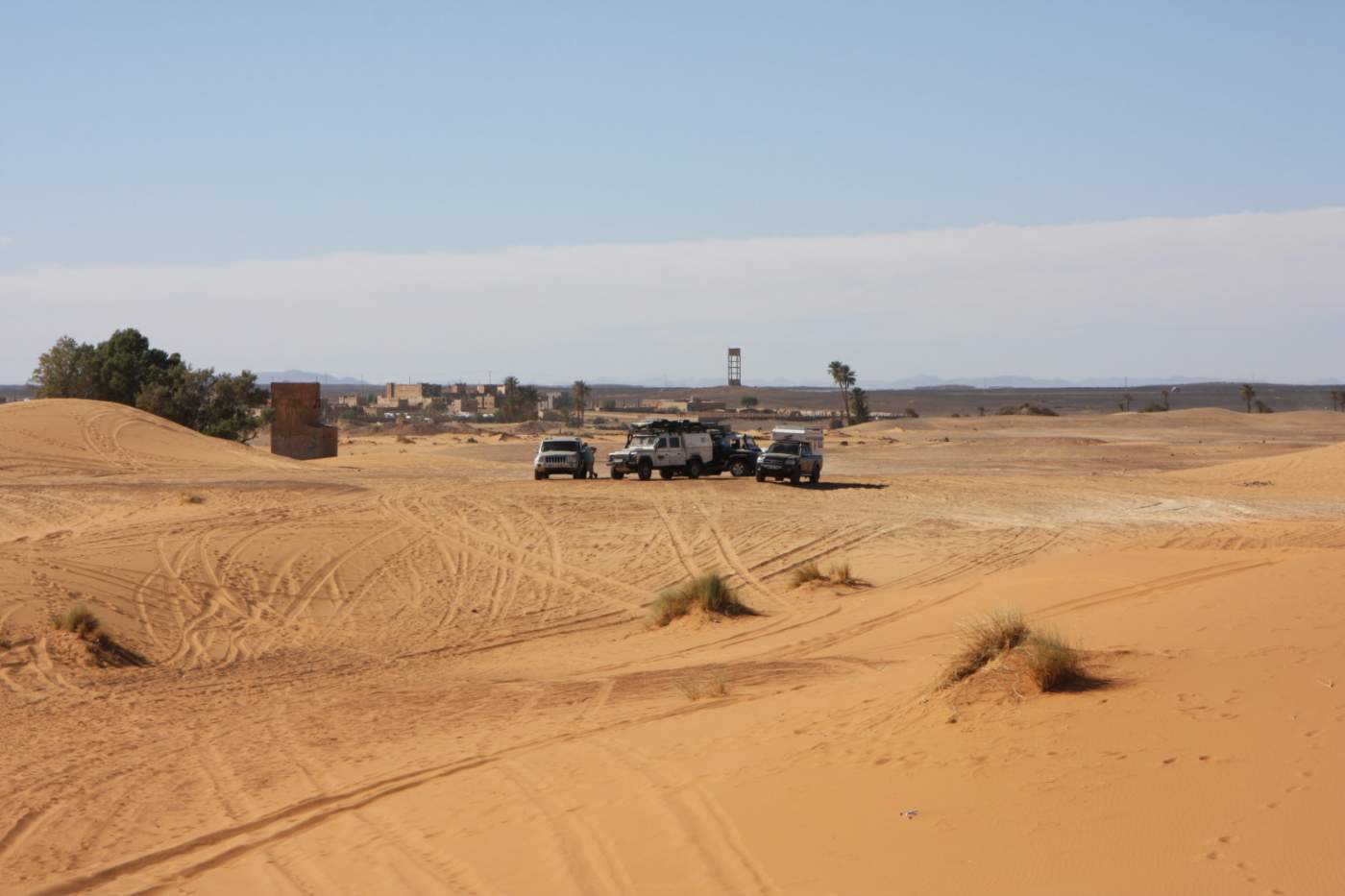
In den Dünen des Erg Chebbi lassen sich mit deinem Geländewagen die ersten Sanderfahrungen sammeln
Geländewagenreise Tag 6: Erg Chebbi – Mhamid (Wildcamp)
Wir verlassen heute das Dünenfeld Erg Chebbi und fahren in die nächste Oasenstadt Mhamid. Das heutige Routing führt uns über verlassene Sandpisten, einsame Offroad Strecken und weite Ebenen bis wir an einer geeigneten Stelle fernab der Zivilisation unser Wildcamp aufschlagen und unseren Land Rovern, Jeeps, Toyotas und Co. die wohlverdiente Ruhe gönnen.
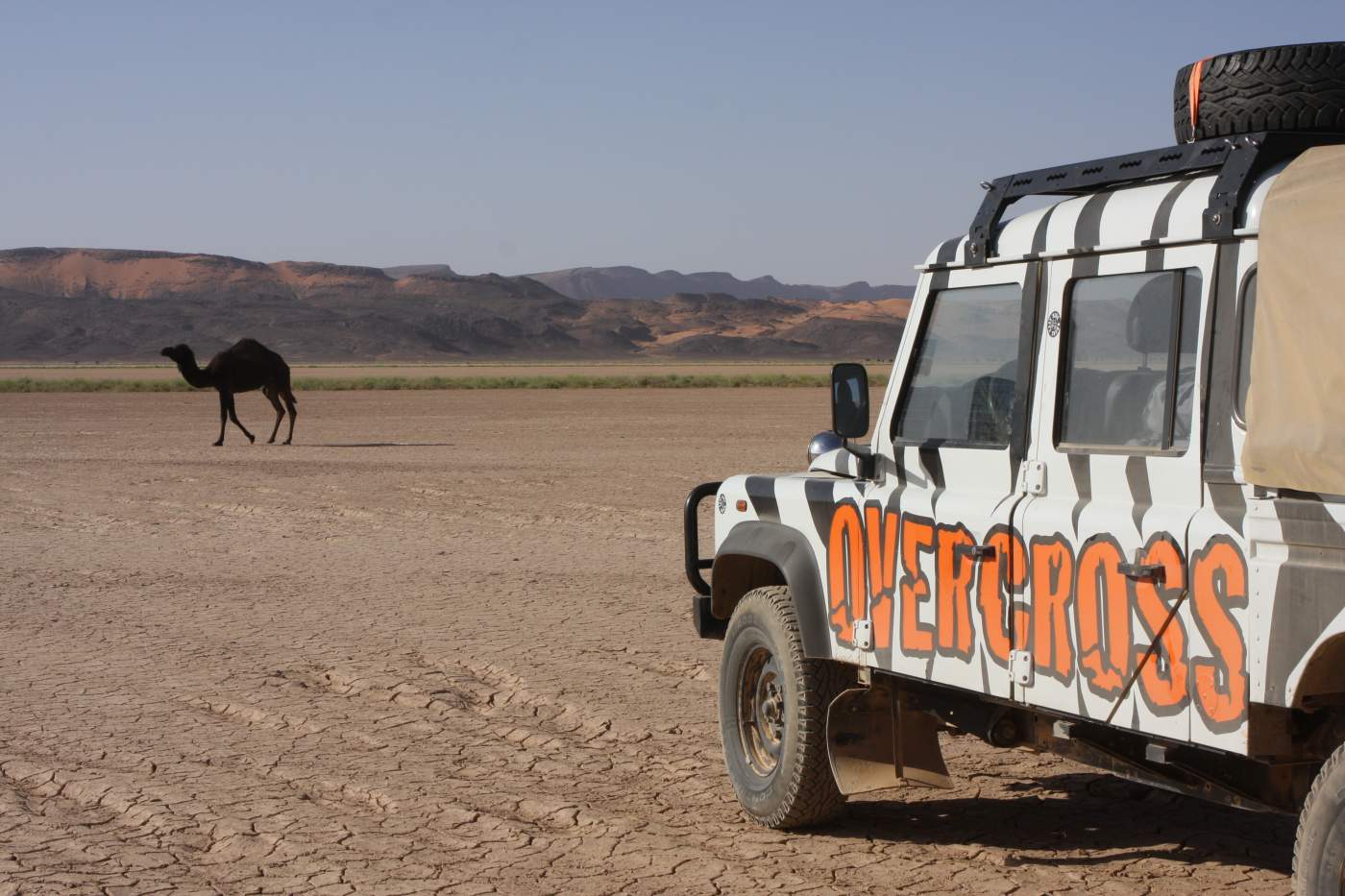
Dromedar trifft auf Geländewagen Landrover Defender 130 nahe Ramlia in Marokko
Geländewagenreise Tag 7: Mhamid – Erg Chegaga
Wir verlassen unser Nachtlager wie wir es vorgefunden haben und fahren weiter in das zweite große Dünenfeld des Erg Chegaga. Die Untergründe Stein und Sand wechseln sich ab bis wir an dem Dünengebiet angekommen sind und uns mit dem 4x4 auch mal an etwas höhere Dünen heranwagen. Es darf geschaufelt werden, denn der ein oder andere Geländewagen wird sich hier im Sand sicherlich eingraben. Da hier 10 Km schon mal ein paar Stunden Zeit in Anspruch nehmen können, suchen wir bei Zeit einen geeigneten Platz zum Übernachten und schlagen unser Camp auf.
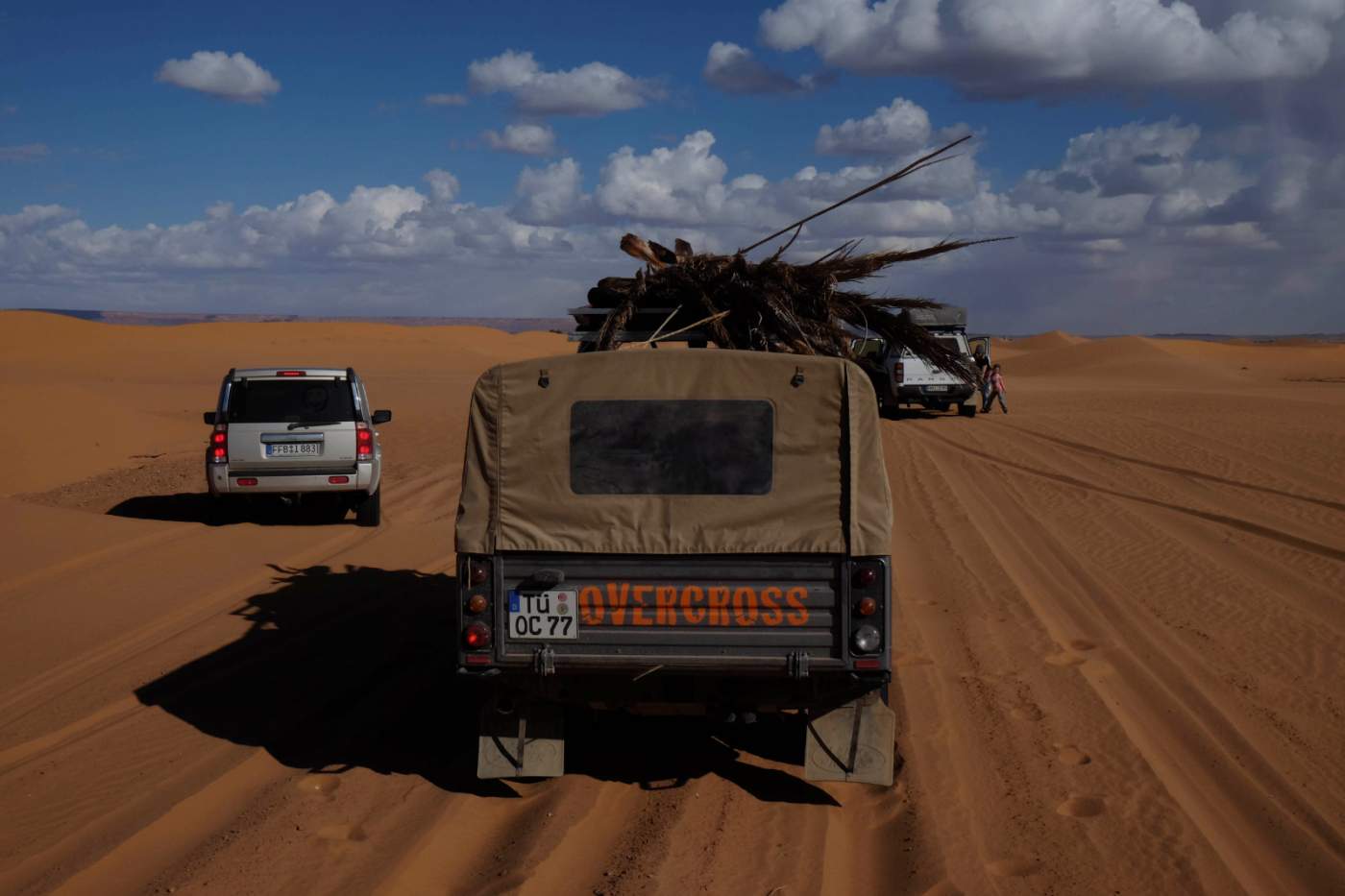
Mit Brennholz beladen steuern wir durch die Dünen des Erg Chigaga auf der suche nach einem geeigneten Platz für unser Biwak
Geländewagenreise Tag 8: Erg Chegaga - Erg Chegaga
Den heutigen sandigen Tag nutzen wir, um uns mit den 4x4 Fahrzeugen nochmal so richtig im Sand auszutoben, bevor es am nächsten Tag wieder in die steinige Zivilisation zurückgeht.
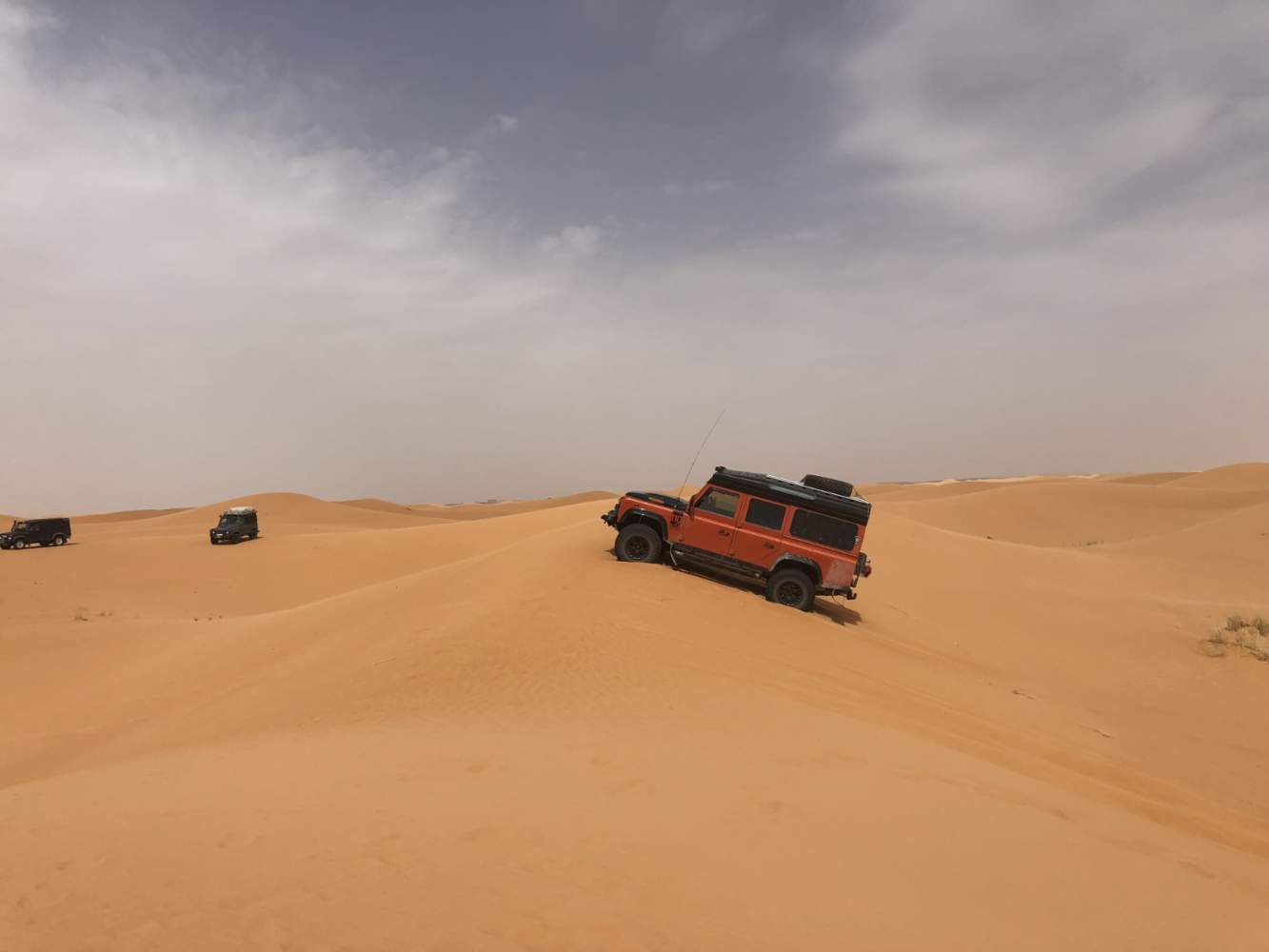
Unsere Route führt uns über die Dünen des Erg Chigaga bis hin zur Oasenstadt Foum Zguid
Geländewagenreise Tag 9: Erg Chegaga – Foum Zguid
Weiter geht das sandige Abenteuer in Richtung der Oasenstadt Foum Zguid. Nachdem wir uns aus dem Dünenfeld gekämpft haben und wir den ausgetrockneten Salzsee - Lac Iriki durchquert haben, wird es wieder steiniger. Wir passieren den Militärposten und fahren anschließend in die Oasenstadt Foum Zguid wo wir unser Camp aufbauen.
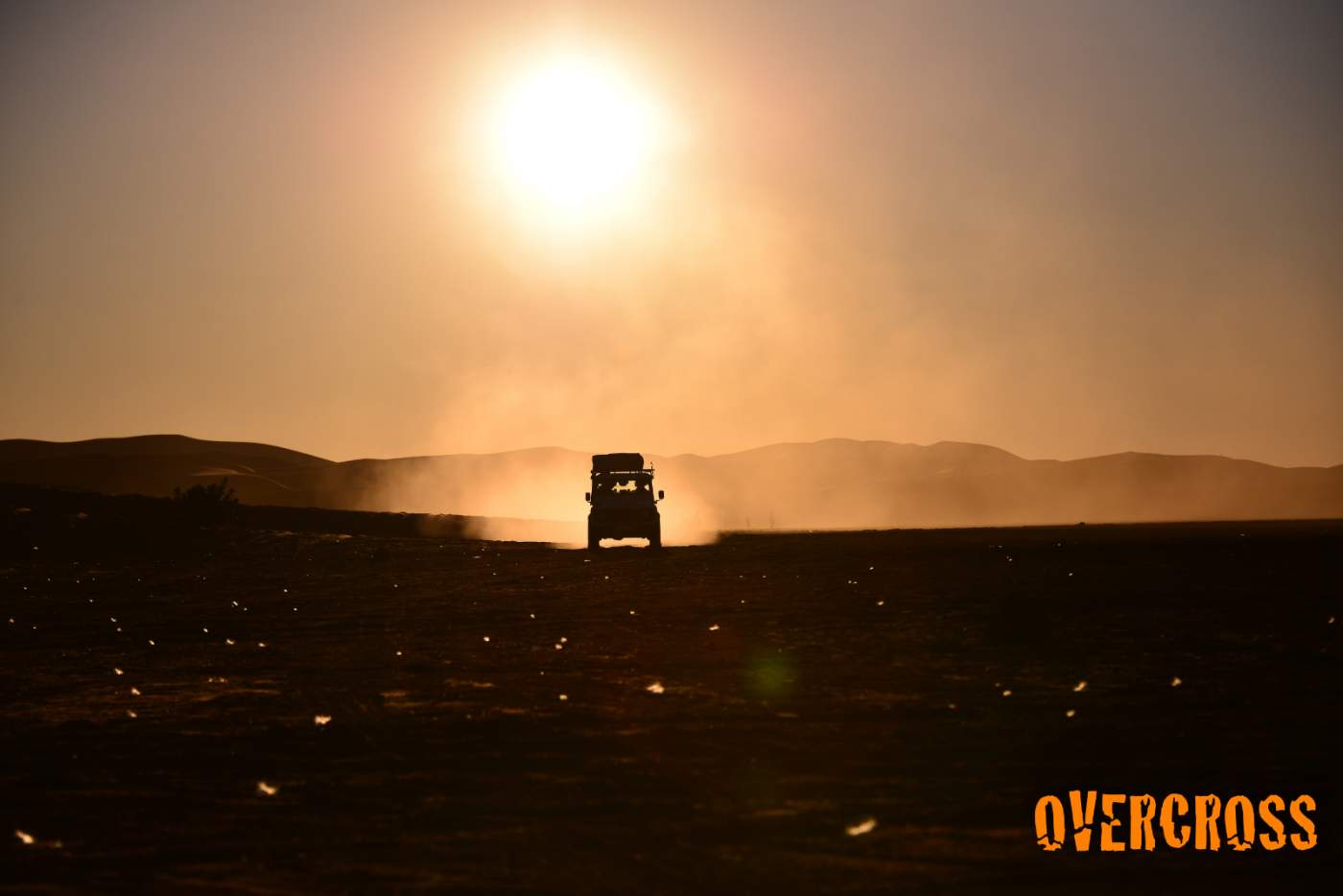
Mit deinem 4x4 über die Piste in den Sonnenuntergang
Geländewagenreise Tag 10: Foum Zguid – Boumalne Dadès
Über Piste erreichen wir heute die Stadt Boumalne Dadès von wo aus wir den perfekten Einstieg in die zwei Schluchten Gorge du Dadès und Gorges du Todra haben, die wir am nächsten Tag unter die Räder nehmen wollen. Wir bauen unser Camp auf und freuen uns auf das bevorstehende Abenteuer des nächsten Tages.
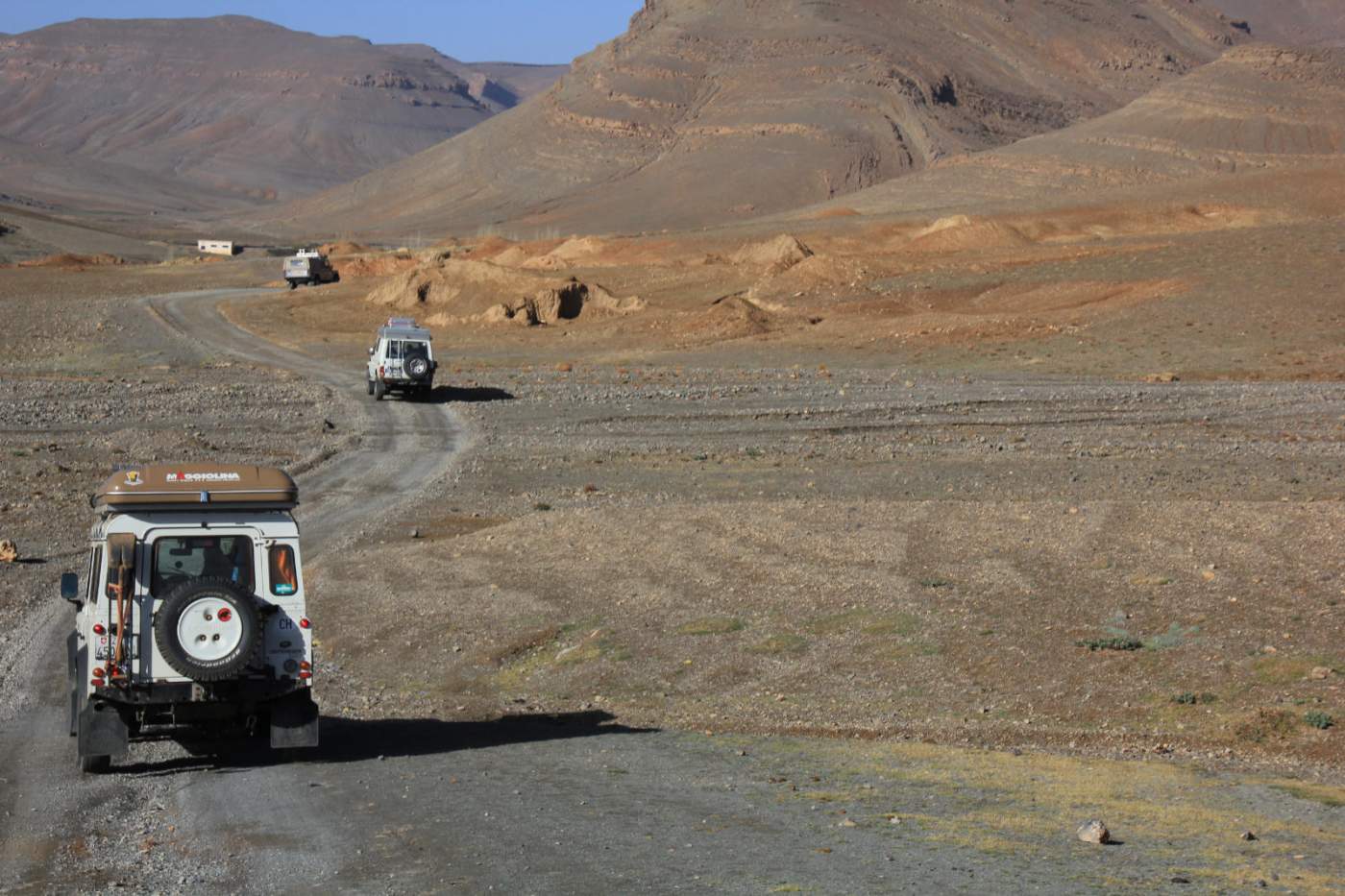
Auf steinigen Pisten geht es durch die zerklüfteten Landschaften Marokkos
Geländewagenreise Tag 11: Boumalne Dadès – Tinghir
Die Todra- und die Dadès-Schlucht stehen heute auf dem Programm. Beide imposanten Schluchten sind zum Großteil asphaltiert, zwei offroad Verbindungen zwischen den beiden Schluchten allerdings nicht. Über einen schwindelerregenden Offroad Pass und ausgetrocknete Flussbette fahren wir von der einen in die andere Schlucht und erreichen mit unseren Geländewägen gegen Abend die Stadt Tinghir in der wir unser Nachtlager aufschlagen.
.JPG)
Offroad über Stock und Stein lässt diese Geländewagenreise durch Marokko keine Langeweile aufkommen
Geländewagenreise Tag 12: Tinghir – Midelt
Über das Städtchen Agoudal, erreichen wir das heutige Highlight, den Cirque de Jaffar, über den wir auf grobem Untergrund und durch ein langes ausgetrocknetes Flussbett bis Midelt fahren. Hier errichten wir das Camp und lassen die letzten Tage Marokko pur Revue passieren, denn in zwei Tagen entern wir bereits wieder die Fähre, die uns zurück nach Europa bringen wird.
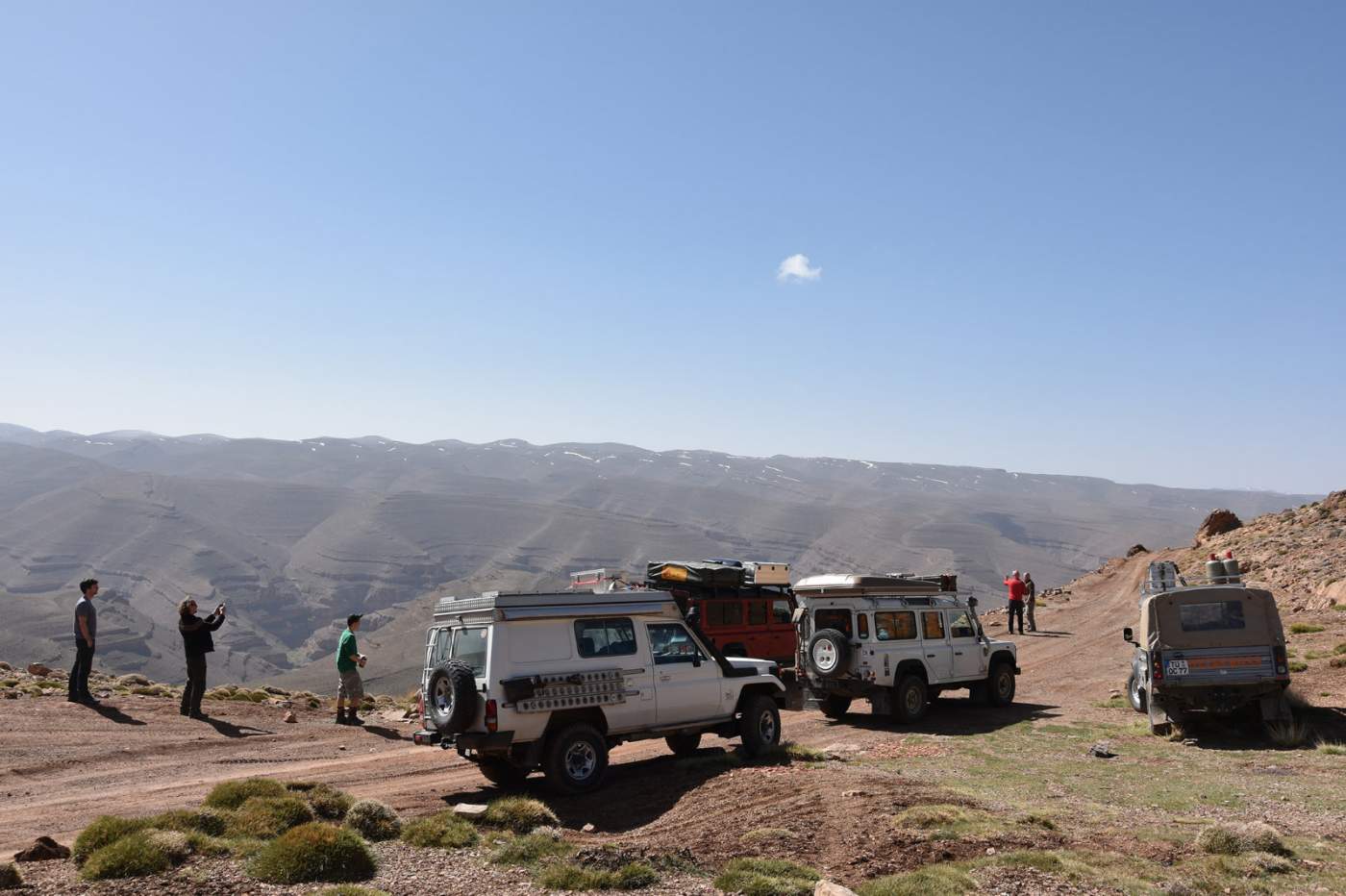
Der Agoudal Pass ist mit seinen bizzaren Felsformationen ein echtes Highlight dieser Geländewagenreise
Geländewagenreise Tag 13: Midelt – Chefchaouen
Über den mittleren und den hohen Atlas fahren wir zurück in die blaue Stadt. Dieses Mal bleibt etwas mehr Zeit um die schöne Stadt im Rif Gebirge zu besichtigen. Ein letztes gemeinsames Abendessen bevor wir am nächsten Tag Abschied nehmen und den afrikanischen Kontinent hinter uns lassen.
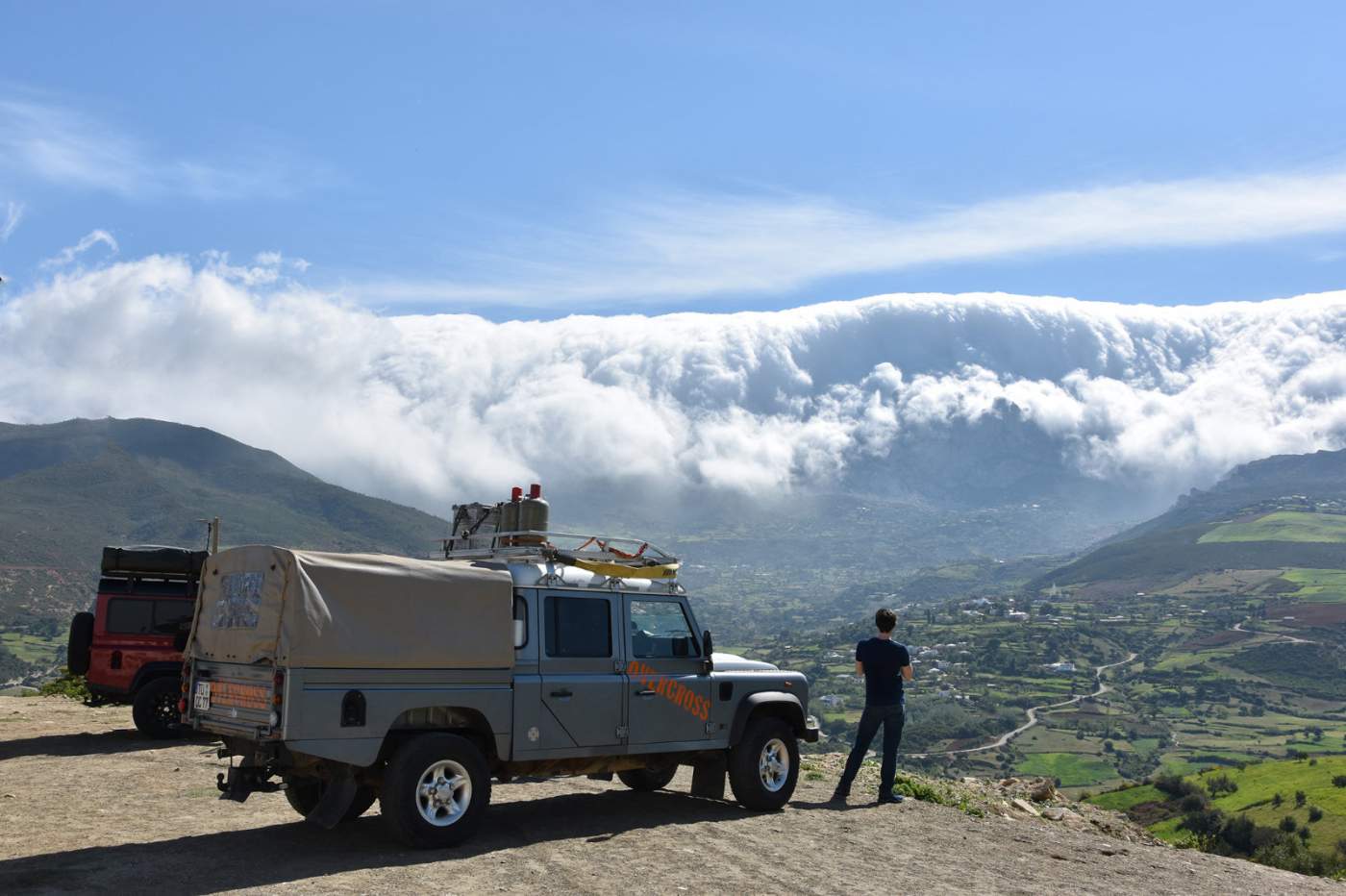
Offroad erreichen wir das Rif Gebirge und werden mit atemberaubenden Aussichten belohnt
Geländewagenreise Tag 14: Chefchaouen – Tanger Med (Fährhafen)
Nach einem letzten gemeinsamen Frühstück lassen wir die letzten 100 Km zum Hafen entspannt angehen, bevor es am Hafen wieder typischer Weise hektisch zugeht. Wir sagen auf Wiedersehen und treten die Heimfahrt an die wahlweise und abhängig vom Datum nach Algeciras, Barcelona, Savona oder Genua gebucht werden kann.
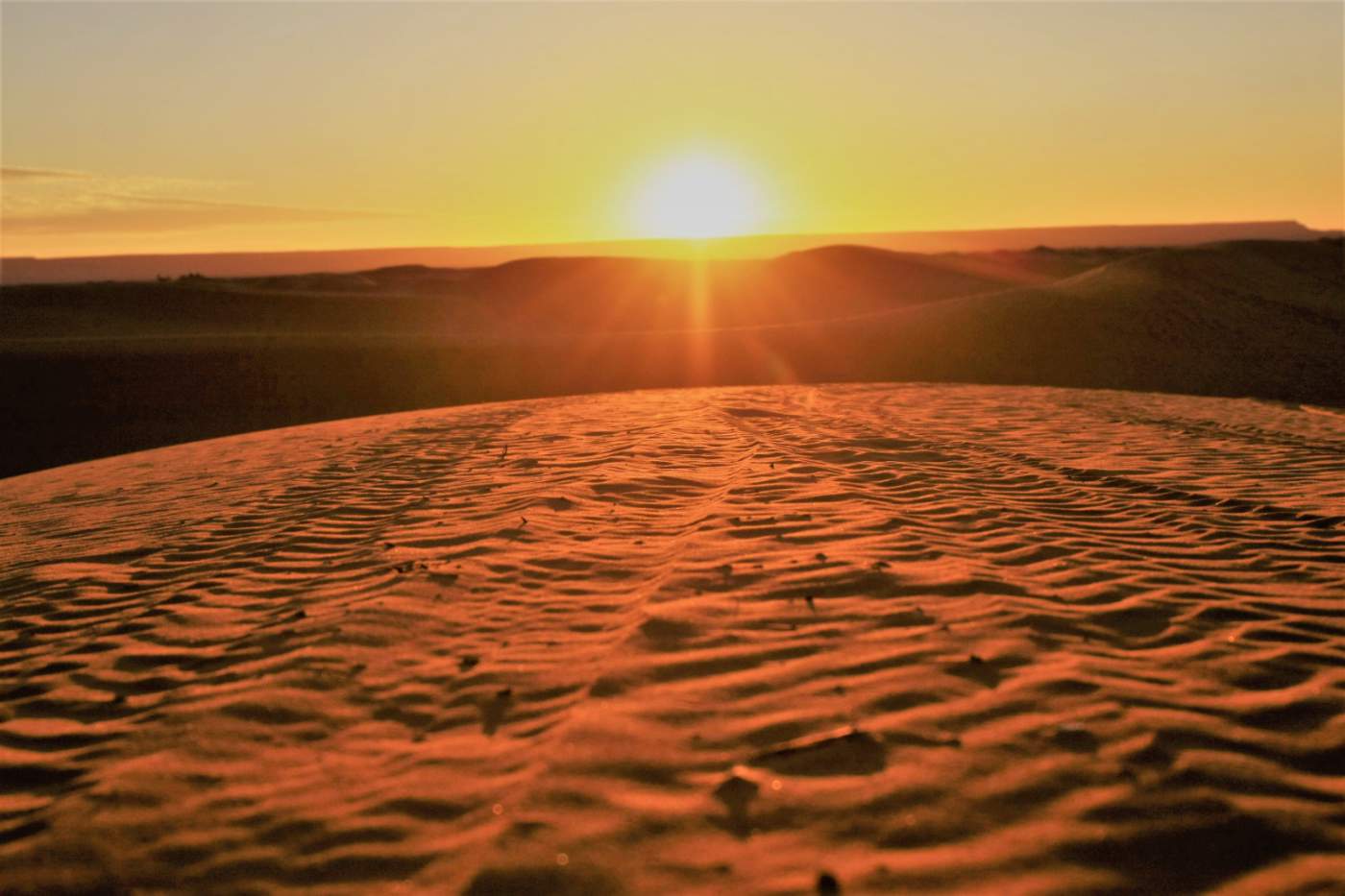
Sonnenuntergang in der Wüste - Bis zum nächsten Geländewagen Abenteuer
Unseren Schwerpunkt sehen wir in der Natur abseits der bekannten Routen sowie in der Ruhe und dem Genießen der beeindruckenden Landschaften - Marokko pur eben. Die genaue Route kann unterwegs leicht geändert werden, wir sind Offroad, also meist abseits der Straße unterwegs und suchen bewusst das abenteuerliche Naturerlebnis auf unserer Offroadtour bis zum Rande der Sahara!
Outdoor, Offroad und Freiheit: Der Traum vom Abenteuerurlaub kann wahr werden - mit OVERCROSS!
Hinweise:
- All unsere Reisebeschreibungen sind lediglich als Tourvorschlag zu verstehen. Der genaue Reiseverlauf kann an die jeweils aktuellen Gegebenheiten vor Ort angepasst werden, wobei wir natürlich stets bemüht sind den beschriebenen Reiseverlauf einzuhalten.
- Sollte die Mindestteilnehmeranzahl nicht erreicht werden, kann es in seltenen Fällen vorkommen, dass die Tour spätestens vier Wochen vor Reisebeginn abgesagt werden muss.
Hier geht es zum Teilnehmerfeedback der letzten Touren.
Unsere 4x4 Mietfahrzeuge findest du HIER!
